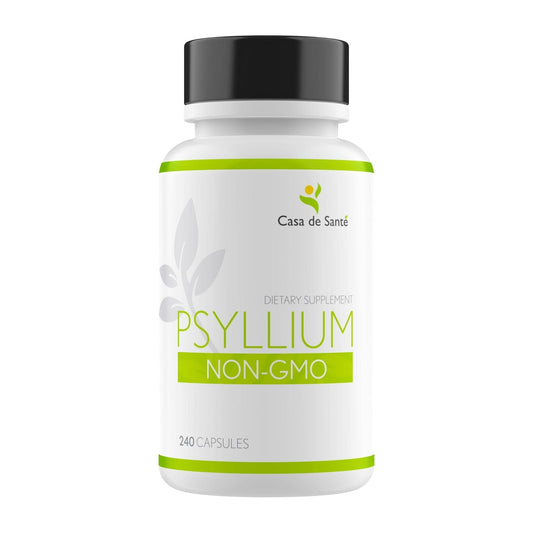Identifying Key IBS Targets: A Comprehensive Guide to Treatment Options
Identifying Key IBS Targets: A Comprehensive Guide to Treatment Options
Irritable Bowel Syndrome (IBS) affects approximately 10-15% of the global population, making it one of the most common gastrointestinal disorders worldwide. Despite its prevalence, IBS remains challenging to treat due to its complex, multifactorial nature and the significant variation in symptoms between patients. The good news is that medical understanding of IBS has evolved substantially in recent years, leading to more targeted and effective treatment approaches.
This comprehensive guide explores the key therapeutic targets for IBS management, from gut motility and visceral hypersensitivity to microbiome modulation and psychological interventions. Whether you're a patient seeking clarity or a healthcare provider looking to optimize treatment plans, understanding these targets can help navigate the diverse landscape of IBS treatment options.
Understanding IBS Pathophysiology: The Foundation for Targeted Treatment
Before diving into specific treatments, it's essential to understand what we're targeting. IBS isn't a single-cause disorder but rather a complex interplay of multiple physiological and psychological factors. The gut-brain axis, altered intestinal motility, visceral hypersensitivity, intestinal inflammation, gut microbiome imbalances, and psychological factors all contribute to symptom development and persistence.
This complexity explains why no single treatment works for everyone and why a personalized, multi-target approach often yields the best results. By identifying which mechanisms are most prominent in an individual's symptom profile, healthcare providers can tailor interventions more effectively.
The Gut-Brain Connection
The bidirectional communication pathway between the central nervous system and the enteric nervous system (the gut's own nervous system) plays a crucial role in IBS. Stress signals from the brain can alter gut function, while gut disturbances can send signals that affect mood and cognitive function. This explains why psychological stress often triggers or worsens IBS symptoms, and why addressing psychological factors can improve gut symptoms.
Treatments targeting this connection include various psychotherapeutic approaches like cognitive behavioral therapy (CBT), gut-directed hypnotherapy, and mindfulness-based interventions. Certain medications, particularly neuromodulators like tricyclic antidepressants and selective serotonin reuptake inhibitors (SSRIs), work partially by influencing this gut-brain communication.
Research has demonstrated that this gut-brain axis operates through multiple pathways, including neural connections via the vagus nerve, endocrine signaling through the hypothalamic-pituitary-adrenal (HPA) axis, and immune system modulation. Neurotransmitters traditionally associated with brain function, such as serotonin, are actually produced in significant quantities in the gut, with approximately 95% of the body's serotonin found in the gastrointestinal tract. This explains why medications targeting serotonin receptors can have profound effects on both gut function and psychological symptoms in IBS patients. Emerging evidence also suggests that early life stress and trauma can permanently alter this gut-brain communication system, potentially predisposing individuals to develop IBS later in life.
Altered Gut Motility
Many IBS patients experience abnormal intestinal contractions—either too fast (leading to diarrhea) or too slow (causing constipation). These motility disturbances represent a key target for pharmacological intervention. For IBS with constipation (IBS-C), prokinetic agents and secretagogues like lubiprostone and linaclotide increase intestinal fluid secretion and motility. For IBS with diarrhea (IBS-D), antispasmodics and motility-slowing agents like loperamide can provide relief.
Recent advances in motility-targeting medications include plecanatide for IBS-C and eluxadoline for IBS-D, both offering more specific mechanisms of action with potentially fewer side effects than older medications. The effectiveness of these treatments highlights how crucial proper gut motility is to symptom management.
The intricate regulation of gut motility involves a complex interplay of neural, hormonal, and paracrine signals. The migrating motor complex (MMC), a pattern of electromechanical activity that sweeps through the intestines during fasting periods, is often disrupted in IBS patients. This disruption can lead to bacterial overgrowth, abnormal fermentation, and exacerbation of symptoms. Additionally, certain cells within the gut wall, known as interstitial cells of Cajal (ICC), act as pacemakers for intestinal contractions. Research has shown that alterations in ICC networks may contribute to the motility disturbances seen in IBS. Understanding these molecular and cellular mechanisms has opened new avenues for therapeutic development, including targeted compounds that modulate specific receptors involved in gut motility regulation, such as 5-HT4 agonists for constipation and 5-HT3 antagonists for diarrhea-predominant symptoms.
Targeting Visceral Hypersensitivity
Visceral hypersensitivity—an increased sensitivity to normal gut sensations—is a hallmark feature of IBS. Many patients perceive normal intestinal contractions or even minor distension as painful or uncomfortable. This heightened sensitivity stems from both peripheral sensitization (changes in gut nerve endings) and central sensitization (alterations in how the brain processes gut signals).
Addressing visceral hypersensitivity often provides significant symptom relief, particularly for pain and discomfort, which many patients rate as their most troublesome symptoms.
Neuromodulators and Pain Management
Low-dose tricyclic antidepressants (TCAs) like amitriptyline and nortriptyline have proven effective in reducing visceral pain sensitivity. These medications work by modulating pain signal transmission between the gut and brain, often at doses lower than those used for depression treatment. Similarly, certain SSRIs and serotonin-norepinephrine reuptake inhibitors (SNRIs) can help reduce pain perception.
Newer agents targeting specific pain receptors are also emerging. For instance, medications affecting opioid receptors in the gut (like eluxadoline) can reduce pain signals without significant central nervous system effects. Peppermint oil, which works through calcium channel modulation in intestinal smooth muscle, provides another option for reducing pain and spasm.
Non-Pharmacological Approaches to Pain
Beyond medications, several non-pharmacological approaches effectively target visceral hypersensitivity. Gut-directed hypnotherapy has shown remarkable success in reducing pain sensitivity through central nervous system modulation. Regular physical activity appears to decrease visceral hypersensitivity, possibly through endorphin release and stress reduction. Heat therapy, acupuncture, and certain mindfulness practices can also help recalibrate pain perception.
These approaches offer the advantage of minimal side effects while potentially addressing multiple aspects of IBS pathophysiology simultaneously. For many patients, combining these non-pharmacological approaches with targeted medications provides optimal relief.
Microbiome Modulation: A Growing Treatment Target
The gut microbiome—the vast community of bacteria, fungi, and viruses inhabiting our intestines—plays a crucial role in IBS. Research increasingly shows that IBS patients often have altered microbiome composition and function, which may contribute to symptoms through effects on gut motility, intestinal permeability, immune activation, and even neurotransmitter production.
Targeting the microbiome offers promising avenues for symptom management, though this field is still evolving rapidly as our understanding deepens.
Probiotics and Prebiotics
Probiotics—live beneficial microorganisms—represent one of the most accessible microbiome-targeting interventions. Certain strains have demonstrated effectiveness for specific IBS symptoms. For example, Bifidobacterium infantis 35624 has shown promise for overall symptom improvement, while Lactobacillus plantarum 299v may help with bloating and pain. Multi-strain formulations often outperform single-strain products, suggesting synergistic effects.
Prebiotics—non-digestible food components that feed beneficial bacteria—present a more complex picture. While they theoretically support microbiome health, some prebiotics like fructooligosaccharides can worsen symptoms in certain IBS patients due to their fermentability. Newer, more targeted prebiotics like galactooligosaccharides show more promise, but individualization remains key.
Dietary Approaches to Microbiome Modulation
Diet profoundly influences microbiome composition and function. The low FODMAP diet, which restricts fermentable carbohydrates, effectively reduces symptoms for many IBS patients partly by altering microbial fermentation patterns. However, long-term restriction may negatively impact microbiome diversity, highlighting the importance of the reintroduction phase of this diet.
Other dietary approaches include increasing polyphenol-rich foods (like berries, dark chocolate, and green tea), which promote beneficial bacteria growth, and ensuring adequate fiber intake from diverse sources to support microbiome diversity. Mediterranean diet patterns have also shown promise for IBS symptom management, likely through their positive effects on the microbiome.
Emerging Microbiome Therapies
Several innovative microbiome-targeting therapies are on the horizon. Fecal microbiota transplantation (FMT), while still experimental for IBS, has shown promising results in some studies, particularly for certain IBS subtypes. Precision prebiotics and probiotics designed to address specific microbiome deficiencies represent another frontier, as does the development of postbiotics—beneficial compounds produced by microbes that could be administered directly.
Phage therapy, using viruses that target specific harmful bacteria while sparing beneficial ones, offers another potential approach to microbiome modulation that may eventually find applications in IBS treatment.
Psychological and Behavioral Interventions
The brain-gut connection means psychological factors not only trigger symptoms but can become therapeutic targets themselves. Psychological interventions have demonstrated effectiveness comparable to—and sometimes exceeding—conventional medical treatments, especially for long-term management.
These approaches work by addressing central nervous system processing of gut signals, reducing stress-induced gut reactivity, and providing coping strategies for symptom management.
Evidence-Based Psychological Therapies
Cognitive behavioral therapy (CBT) adapted specifically for IBS has robust evidence supporting its effectiveness. This approach helps patients identify and change thought patterns that exacerbate symptoms while developing practical coping strategies. Studies show CBT can reduce symptom severity by 50-70% in many patients, with benefits persisting long after treatment ends.
Gut-directed hypnotherapy represents another powerful intervention, with multiple controlled trials demonstrating its efficacy. This specialized form of hypnotherapy uses gut-specific imagery and suggestions to normalize gut function and reduce pain sensitivity. Success rates approach 70-80% in specialized centers, with improvements maintained for years following treatment.
Integrating Treatment Approaches: The Future of IBS Management
As our understanding of IBS pathophysiology becomes more sophisticated, treatment approaches are evolving toward integrated, personalized strategies that target multiple mechanisms simultaneously. This integration represents the cutting edge of IBS management and likely the path to better outcomes.
The most successful treatment plans often combine interventions across different categories—perhaps a microbiome-targeting probiotic, a neuromodulator for pain sensitivity, dietary modifications, and a psychological approach like CBT. This multi-target strategy acknowledges the complex nature of IBS and addresses its various contributing factors simultaneously.
Personalized Medicine in IBS
The future of IBS treatment lies in personalization. Emerging biomarkers—from microbiome profiles to immune markers and even brain imaging patterns—may eventually help predict which treatments will work best for individual patients. Already, certain clinical features can guide treatment selection: predominant bowel pattern (constipation vs. diarrhea), pain severity, psychological comorbidities, and prior treatment responses.
Digital health technologies are accelerating this personalization through symptom tracking apps, online cognitive behavioral therapy programs, and even gut-directed hypnotherapy applications. These tools not only increase access to effective treatments but also generate data that can further refine treatment matching algorithms.
The journey toward effective IBS management often requires patience and persistence. By understanding the key therapeutic targets and the various interventions available for each, patients and healthcare providers can develop comprehensive, personalized treatment strategies that address the unique constellation of factors driving symptoms. With this targeted approach, most IBS patients can achieve significant improvement in both symptoms and quality of life.




























